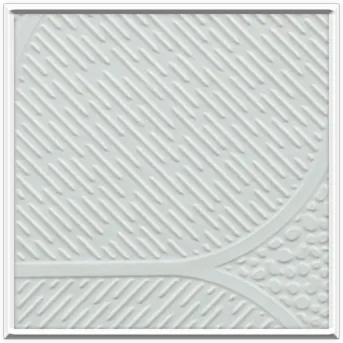Nov . 17, 2024 22:23 Back to list
gypsum access panel
Understanding Gypsum Access Panels A Comprehensive Guide
When it comes to building construction and interior design, functionality and aesthetics are paramount. One critical element that often goes unnoticed is the access panel. Among various types of access panels available in the market today, gypsum access panels have gained significant popularity due to their versatile applications and ease of installation. This article aims to provide a comprehensive overview of gypsum access panels, their benefits, installation process, and common applications.
What is a Gypsum Access Panel?
A gypsum access panel is a type of panel made from gypsum board that serves as a concealed access point. Gypsum board, commonly known as drywall or plasterboard, is used in building construction due to its fire-resistant properties and ease of installation. Gypsum access panels are typically installed in drywall ceilings, walls, or other surfaces, allowing easy access to plumbing, electrical systems, HVAC units, and other vital components for maintenance and inspection.
Benefits of Gypsum Access Panels
1. Aesthetic Appeal One of the primary advantages of gypsum access panels is their seamless integration into the surrounding drywall. They can be painted or finished to match the wall or ceiling, ensuring that they blend seamlessly with the rest of the interior design, thereby maintaining the aesthetic integrity of the space.
2. Fire Resistance Gypsum boards are known for their fire-resistant capabilities. Using gypsum access panels can enhance the overall fire safety of a building, as they can help compartmentalize fire spread and provide protection for essential systems.
3. Durability and Longevity Gypsum access panels are durable and resistant to wear and tear. With proper installation, they can withstand the test of time, making them a cost-effective option for both residential and commercial properties.
4. Easy Installation Installing gypsum access panels is a relatively straightforward process. They can be framed directly into the drywall, making it easy for builders and contractors to incorporate them into their projects without significant additional labor.
5. Versatility These access panels are suitable for various applications, including residential homes, commercial buildings, hospitals, schools, and more. They can be installed in both interior and exterior walls, catering to diverse access needs.
Installation Process
gypsum access panel

The installation of gypsum access panels involves several steps
1. Determine Location Identify where the access panel will be installed based on the services that need to be accessed, such as electrical boxes or plumbing fixtures.
2. Cut the Opening Using a drywall saw, carefully cut an opening in the drywall that matches the size of the access panel.
3. Install the Frame Most gypsum access panels come with a frame that should be anchored securely to the wall studs or ceiling joists.
4. Insert the Panel Place the gypsum access panel into the opening, ensuring it fits snugly. Secure it as per the manufacturer's instructions.
5. Finishing Touches Once installed, the panel can be painted to match the surrounding surfaces, ensuring it remains inconspicuous.
Common Applications
Gypsum access panels are ideal for various settings, including
- Residential Homes Used to access plumbing connections, electrical wiring, or HVAC systems in walls or ceilings. - Commercial Buildings Ideal for maintenance access in offices, retail spaces, and public facilities. - Healthcare Facilities Provides easy access to critical systems while maintaining stringent hygiene standards. - Educational Institutions Allows quick access to maintenance areas in classrooms and administrative offices.
Conclusion
Gypsum access panels are an essential feature in modern construction that combines functionality with aesthetic appeal. Whether for residential or commercial use, they provide a practical solution for accessing vital systems while maintaining the interior design's elegance. Understanding their benefits and installation methods can help builders and homeowners make informed decisions, ultimately leading to safer and more efficient spaces.
-
Durable Ceiling T Grid Systems | Easy InstallationNewsAug.29,2025
-
PVC Gypsum Ceiling: Durable, Laminated Tiles for Modern SpacesNewsAug.28,2025
-
Pvc Gypsum Ceiling Is DurableNewsAug.21,2025
-
Mineral Fiber Board Is DurableNewsAug.21,2025
-
Ceiling Tile Clip Reusable DesignNewsAug.21,2025
-
Ceiling T Grid Modular DesignNewsAug.21,2025







